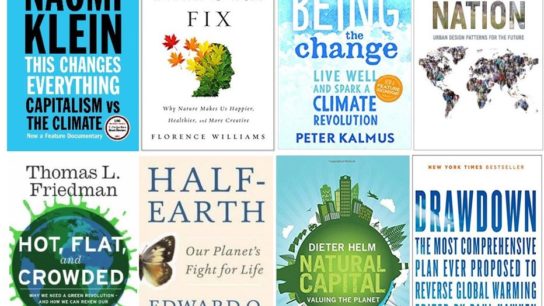On November 20, the FIFA World Cup 2022 commences in Qatar. Over the course of a month, 32 teams will represent their countries in what is arguably the “holy grail” of footballing tournaments. While the tournament’s latest instalment will be the most compact one in its 92-year history, meaning that air travel would be unnecessary once it kicks off, critics argue that this ‘win’ pales in comparison to the environmental costs. Here are some of the environmental issues surrounding Qatar 2022.
—
3 Environmental Issues Related to Qatar 2022
1. Desalination
The principal environmental issue surrounding this year’s World Cup arises from Qatar’s heavy reliance on desalination – a process of removing dissolved mineral salts from water to make it fresh for agricultural purposes and human consumption. While this sounds eco-friendly, certain factors complicate the “greenness” of this approach.
Considering the dominant use of fossil fuels for desalination, carbon emission becomes an unavoidable environmental consequence. Also known to be a notorious polluter of the marine system, desalination releases brine – a high-concentration solution of salt water – into the sea. For this reason, not only does desalination endanger coral reefs, but it also harms smaller marine organisms. Additionally, due to the high-pressure system associated with the process, small marine organisms run the risk of getting sucked in and colliding with the intake pipe screens, causing severe injury and death.
The World Cup’s use of 8 stadiums and 130 training grounds further aggravates the pressure on desalination due to the huge water demands. Qatar is expected to increase its water supply by 10% during this period. According to a Reuter report, at least 10,000 liters of desalinated water would be required daily to water each turf. Given the current water shortage in Qatar, critics argue the unjustifiable nature of this additional strain.
Although Gulf Cooperation Council (GCC) countries are exploring solar-powered desalination as an eco-friendly alternative, reports indicate that it is not yet viable. So, the use of fossil fuels for desalination remains dominant.
2. Carbon Neutrality Claims
Another problem has to do with FIFA’s carbon neutrality claims. Carbon Market Watch (CMW), an environmental lobby group that has worked with institutions like the European Union to track carbon emissions, tagged FIFA’s claims as misleading. In a report published on the group’s website, CMW criticised the credibility of a new carbon certification standard devised specifically for the tournament, questioning its independence.
“It would be great to see the climate impact of FIFA World Cups being drastically reduced,” said Gilles Dufrasne, lead on global carbon markets at Carbon Market Watch. “But the carbon-neutrality claim that is being made is simply not credible.”
“Despite a lack of transparency, the evidence suggests that the emissions from this World Cup will be considerably higher than expected by the organizers,” he added, “and the carbon credits being purchased to offset these emissions are unlikely to have a sufficiently positive impact on the climate.”
Julien Jreissati of Greenpeace Middle East similarly accused the organisers of “window dressing”, referring to net-zero emissions claims as “greenwashing”.
On their part, FIFA and the Supreme Committee disagreed with CMW’s assessment. ‘It is speculative and inaccurate to draw conclusions on the SC’s commitment to deliver the world’s first carbon-neutral FIFA World Cup,’ a representative of the Supreme Committee for Delivery & Legacy informed Sportsmail.
The representative further stated that ’emissions that will be unavoidable while preparing for and hosting the tournament will be offset through investing in internationally recognised and certified carbon credits. The SC’s decision to transparently and proactively offset carbon emissions in a responsible manner should be recognised, rather than criticised.’ Nevertheless, critics point out that the organisers’ estimations lean on the conservative side, consequently lowballing the actual emissions attributable to the World Cup.
You might also like: What Is Greenwashing and How to Avoid It?
3. Justifying the Post-World Cup Legacy of the New Stadiums
CMW’s report further questioned the legacy of World Cup stadiums, given Qatar’s relatively small population and compact geographical space. Out of the eight stadiums, which cost $6.5 billion, seven are brand new, with the eighth one significantly rebuilt. Moreover, six of the seven new stadiums are permanent, with one —Stadium 974— being demountable. Altogether, the post-tournament stadiums have a combined capacity of 155,500, a sizeable reduction from its 380,000 world cup capacity.
Yet, Daily Mail reports that the country’s most successful football team, Al-Sadd, playing in the Qatar Stars League, averages 1,500 home attendance in Doha. Al-Rayyan, the second team for attendance, averages 708 in-person supporters. Given this relatively low football demand, critics argue that the environmental cost of constructing these stadiums is unjustifiable.
According to reports, constructing the new stadiums accounts for only 5.5% of the World Cup emissions. The organisers allocated 438 kilotons of carbon dioxide equivalent to the temporary stadium and only 206 kilotons to six permanent ones. CMW criticised the logic behind this figure, given that the six permanent stadiums have an emission statistic way below the temporary one. The environmental group explained this “seemingly illogical” outcome by shedding light on the accounting methodology involved.
First, emissions from the six new stadiums were divided into two categories— construction of temporary seats, and construction of the stadiums (excluding the temporary seats). Whereas the former accounted for 202 kilotons, the latter made up only 4.5 kilotons. Moreover, while the second category was dependent on the timeline of stadium use during the World Cup and two FIFA Club World Cups in 2019 and 2020, no specific detail was provided on how 4.5 kilotons were computed.
Nevertheless, CMW’s estimates show that emissions from these six stadiums should be 1.62 megatons. This is almost eight times as high as the reported figure (206 kilotons). In addition to the temporary one, CMW places the total emissions arising from constructing 7 new stadiums at 2.06 megatons. For this reason and more, the stadiums’ legacy remains overshadowed by the environmental price paid.
Final Remarks
Amid these tense debates about the environmental cost of Qatar 2022, concerns over human rights violations, anti-LGBTQ claims, and labour laws have also dominated the scene leading up to the tournament. While FIFA often downplayed the reality of these concerns, Sepp Blatter, FIFA’s former president, admitted that handing the hosting duty to Qatar was a “bad choice” and a “mistake” arising from “political pressure.”
Featured image: Wikimedia Commons
You might also like: Climate Change in the Middle East Poses Major Threat to Human Life and Economy: IMF


















